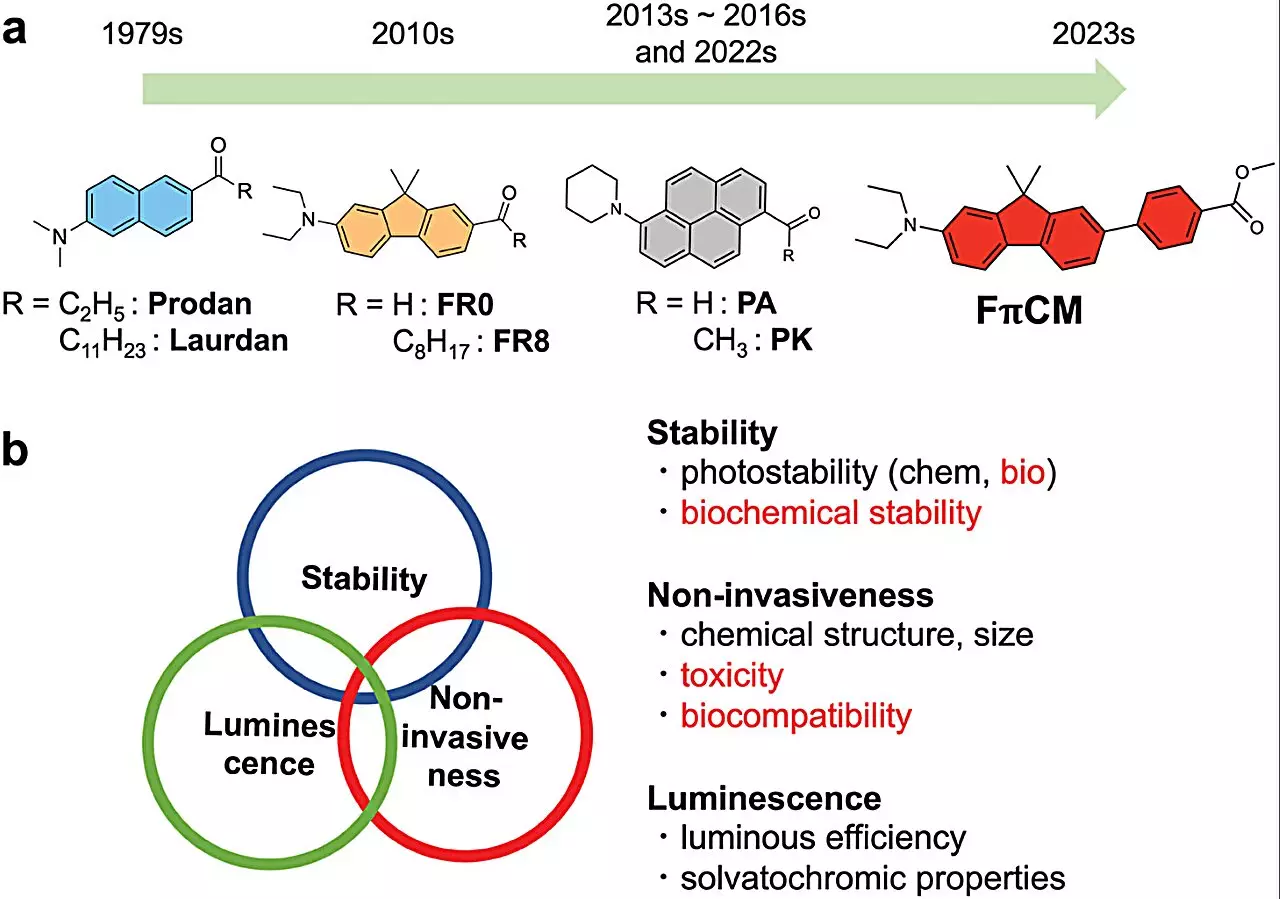Cellular functions heavily rely on the properties of lipid membranes, which are not mere barriers but actively participate in processes such as material exchange, waste management, and sensing. Studying lipid membrane order is crucial in understanding various cellular functions and diseases, as abnormalities in membrane order can have significant impacts on cell physiology. One way to visualize lipid membrane fluidity is by using solvatochromic probes, which change color depending on the polarity of the surrounding environment.
Traditional solvatochromic dyes face challenges such as low stability, weak fluorescent emissions, cell toxicity, and dependence on ultraviolet light for excitation. These limitations have hindered real-time imaging of lipid membrane order and have made it difficult to study dynamic processes such as cell division accurately. As a result, there is a need for innovative solvatochromic probes that can overcome these challenges and provide valuable insights into lipid membrane fluidity.
A research team from Tokyo Institute of Technology and Kyushu University, led by Associate Professor Gen-ichi Konishi and Professor Junichi Ikenouchi, set out to develop a novel solvatochromic dye that could revolutionize real-time lipid order imaging. After investigating various dyes, they designed a unique molecular structure that met all their expectations. The final version of the probe, named 2-N,N-diethylamino-7-(4-methoxycarbonylphenyl)-9,9-dimethylfluorene (FπCM), exhibited exceptional stability, low toxicity, and remarkable fluorescent properties.
The research team conducted a series of experiments to assess the performance of FπCM. The new solvatochromic probe demonstrated outstanding fluorescent properties and chemical stability in various conditions, including solvents, artificial lipid membranes, and living cells. One of the most significant advantages of FπCM was its long-term photostability, lasting approximately five hours compared to the rapid quenching of traditional dyes like Prodan and Laurdan. This extended photostability makes FπCM an ideal candidate for real-time imaging applications.
By successfully observing lipid membrane fluidity during cell division, the research team established the non-toxic nature of FπCM and its potential for studying dynamic cellular processes. Furthermore, the probe can be easily modified to target specific lipid membranes within organelles such as mitochondria and the endoplasmic reticulum. Dr. Konishi envisions using FπCM to investigate the correlation between membrane protein activation and spatiotemporal membrane fluidity transitions, offering new insights into membrane functions.
Overall, the development of FπCM represents a significant milestone in the field of cellular biology, providing researchers with a powerful tool to study lipid membrane fluidity in real-time. The exceptional stability, low toxicity, and fluorescent properties of FπCM make it an invaluable resource for elucidating the intricate relationship between membrane order and cellular functions. As further research is conducted using this innovative solvatochromic probe, we can expect to uncover new discoveries and deepen our understanding of the complex mechanisms governing cellular processes.



Leave a Reply